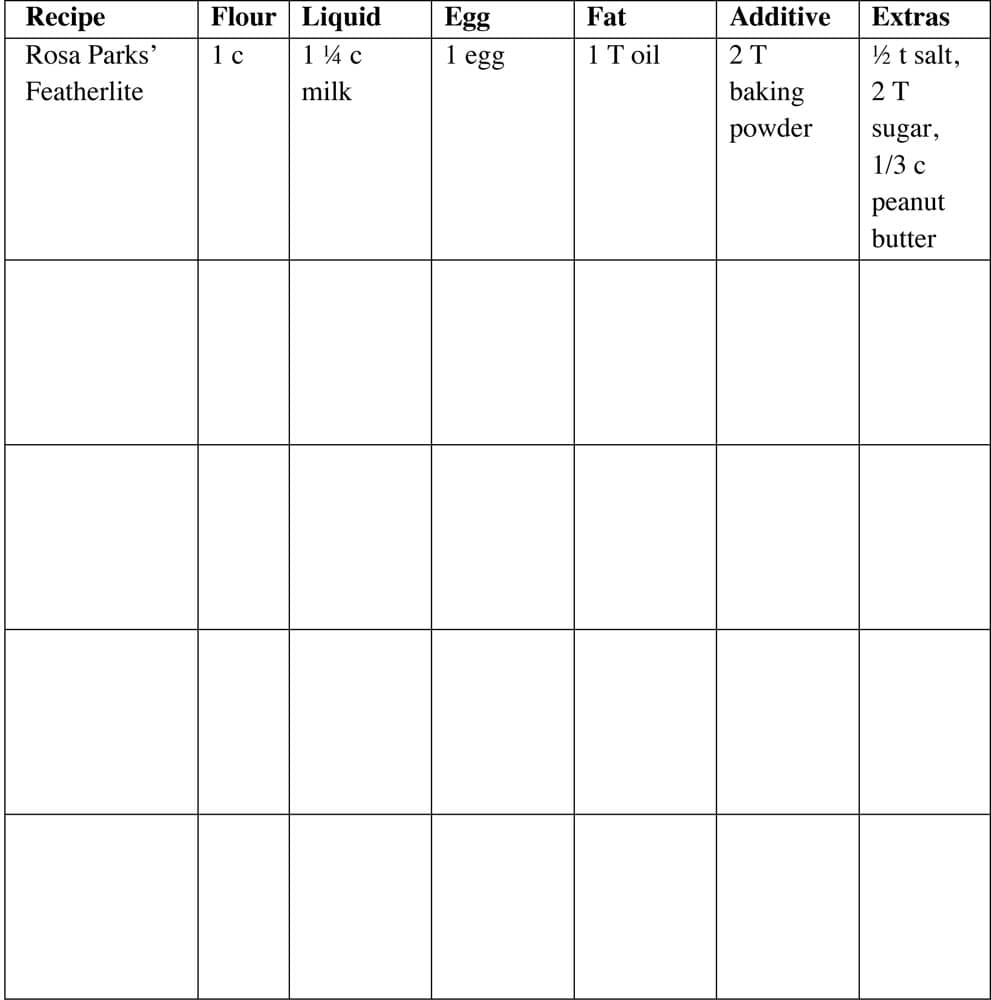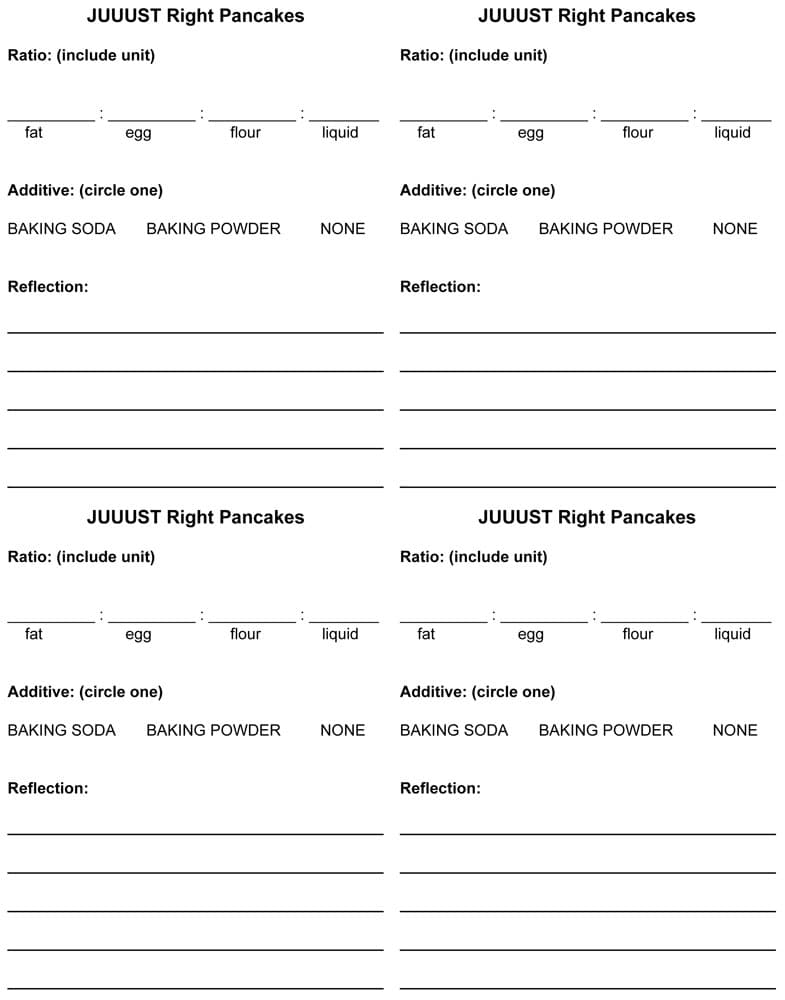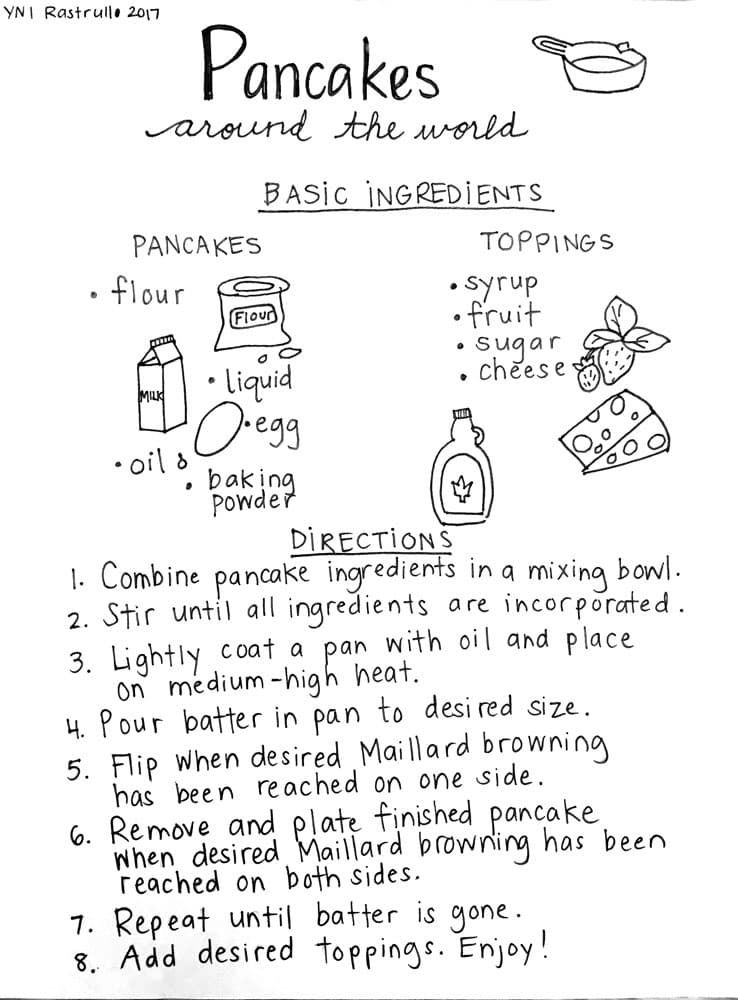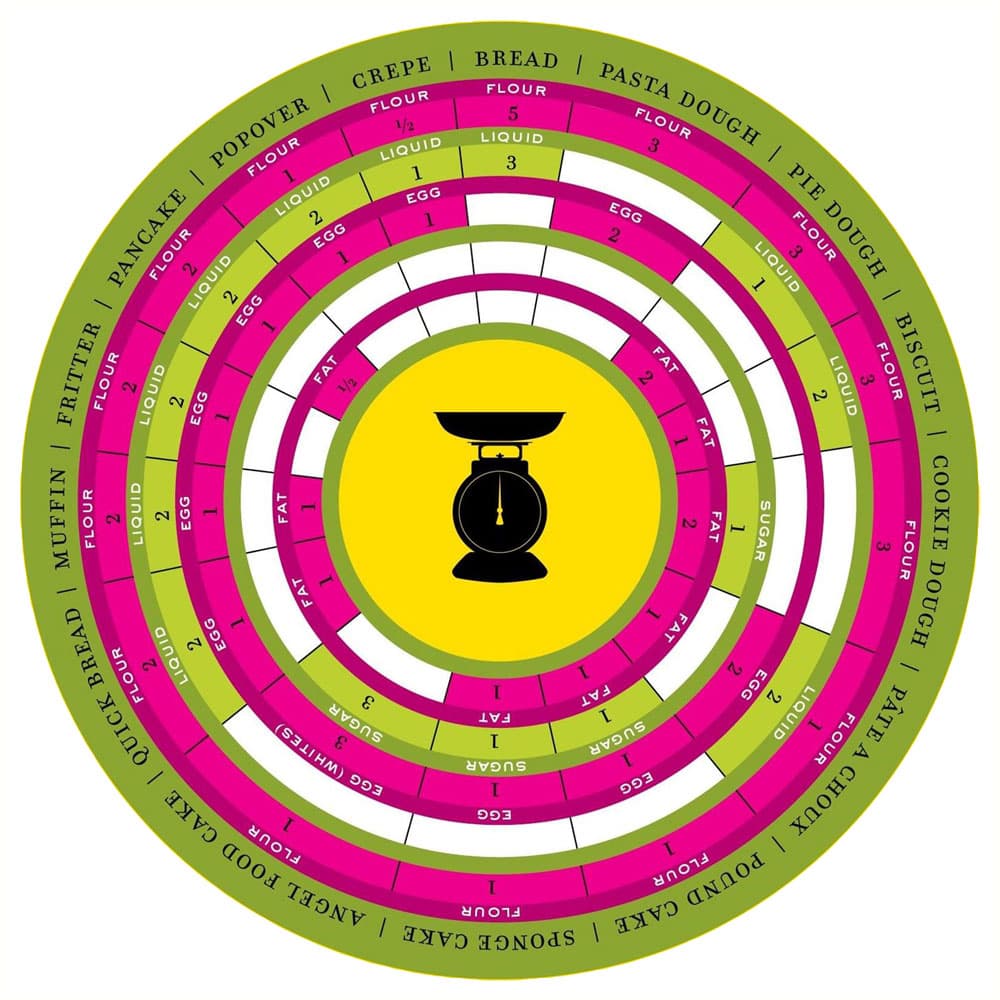Classroom Activities
Lesson 1 – Pancakes Around the World
Every culture in the world has some form of a pancake as a dish. Students will have experience with this especially if you show a picture of a pancake and give an example of a pancake from another culture. Brainstorm types of pancakes your students have eaten at home using a “Whip Around” and record the results on an anchor chart. For homework, ask students to bring in a “pancake” recipe that is used at home or ask them to search the internet for one from their culture.
Lesson 2 – Examine Primary Sources
Compare the recipes students bring in and talk about the ingredients. Examine Rosa Parks’ recipe.33 Ask students what all recipes have in common (flour, liquid, egg, fat, additive, extras). Make an anchor chart recording the measurements starting with Rosa Parks’. See Figure 1 for the anchor chart set up.
Figure 1: Anchor chart for discussion about pancake recipes in Lesson 2.

Lesson 3 - Cornell Note-Taking on Different Representations of Ratios
Ratios can be expressed in many ways. The most common way is through the use of the colon (2:1). Students take notes in their journals, highlight key vocabulary, and add the vocabulary to the index.
Lesson 4 – Representing Equivalent Ratios Using Tape Diagrams
Eureka Math Grade 6 Module 1 Lesson 134
Lesson 5 – Tape Diagrams with Recipe Ratios
Students examine the anchor chart from lesson 2 and chose pancakes to write ratios for. Students then complete tape diagrams for each ratio. See Figure 2.
Figure 2: Worksheet for Lesson 5

Lesson 6 – Students write Multiple Ratios in Context
Eureka Math Grade 6 Module 1 Lesson 235
Lesson 7– Reexamine Recipe Ratios (similar to what students did in the previous day’s lesson, except this time with classroom data). See Materials for Classroom Use Figure 3.
Figure 3: Worksheet for Lesson 7

Lesson 8 – Cornell Note Taking on Ingredients
Students listen and take notes about the different reactants that make pancakes: liquid, flour, egg, fat, and additives.
Lesson 9 – Demo: Sodium Bicarbonate and Acid Interaction36
Ingredients: 1 teaspoon baking soda, 4 tablespoons vinegar, 1 liter soda bottle (empty), and one balloon
Carefully measure the ingredients into the soda bottle, and then gently stretch the balloon over the opening. The result is water, carbon dioxide, and sodium acetate. The chemical formula is:
Na+ + HCO3- + CH3CO2H → H2O + CO2 + Na+ + CH3CO2-
Students do a scientific drawing of their observations of the reaction.
Lesson 10 – States of Matter Review
Students examine the ingredients in a pancake recipe, and sort them according to state of matter. What state are the incorporated ingredients before and after mixing? After heat is applied to the ingredients?
Lesson 11 – Ratio Tables
Eureka Math Grade 6 Module 1 Lesson37
Lesson 12 – Ratio Change
Eureka Math Grade 6 Module 1 Lesson 638
Lesson 13 – Double Number Lines
Eureka Math Grade 6 Module 1 Lesson39
Lesson 14 – Math Assessment Project (MAPS) Formative Assessment Lesson (FAL)40
Lesson 15 – Nana’s Chocolate Milk41
This is a “Three-Act Task” that uses a video to examine the ratio of milk to chocolate powder to make chocolate milk. In the task, the main character “messes up” the ratio and the job of the class is to either add more milk or chocolate powder to the glass to get the right proportions. Students record their thinking in their journals.
Lesson 16 – Quiz
See Figure 4.
Figure 4: Ratios Quiz for Lesson 16


Lesson 17 – Chef Guest Speaker – Guest speaker answers the essential questions: How do you use math and science as part of your job? Students take Cornell Notes.
Lesson 18 – Line Up and Pre-Work for Cooking Activity – Watch video: Math in the Kitchen: Do you Measure Up?42 Have students line up in a single file line according to how they prefer their pancakes crepes on one side all the way to the fluffiest pancake on the other side of the room. Split up the class into thirds: crepes, something in between crepes and pancakes, fluffy pancakes. Have students get into pairs in their groups to discuss the ratios and ingredients. See Figure 5.
Figure 5: Worksheet for Lesson 18

Lesson 19 – Pancakes around the World - Kitchen Visit 1 - See Figure 6.
Figure 6: Lesson Plan for Lesson 21

Lesson 20 – Kitchen Ratios Reflection and Recipe Redesign
Show the image Chef Hestnar’s ratios (Figure 7) as discussed in Michael Ruhlman’s book. Have students compare the ratios they came up with from lessons 18 and 19.
Figure 7: Chef Uwe Hestner’s Ratios as described in Michael Ruhlman’s book Ratio: The Simple Codes Behind the Craft of Everyday Cooking (Used with permission).

Lesson 21 – Kitchen Visit 2
Students retry the recipes based on their adjustments.
Lesson 22 – Socratic Seminar
Students ponder the question: What makes a perfect pancake?

Comments: